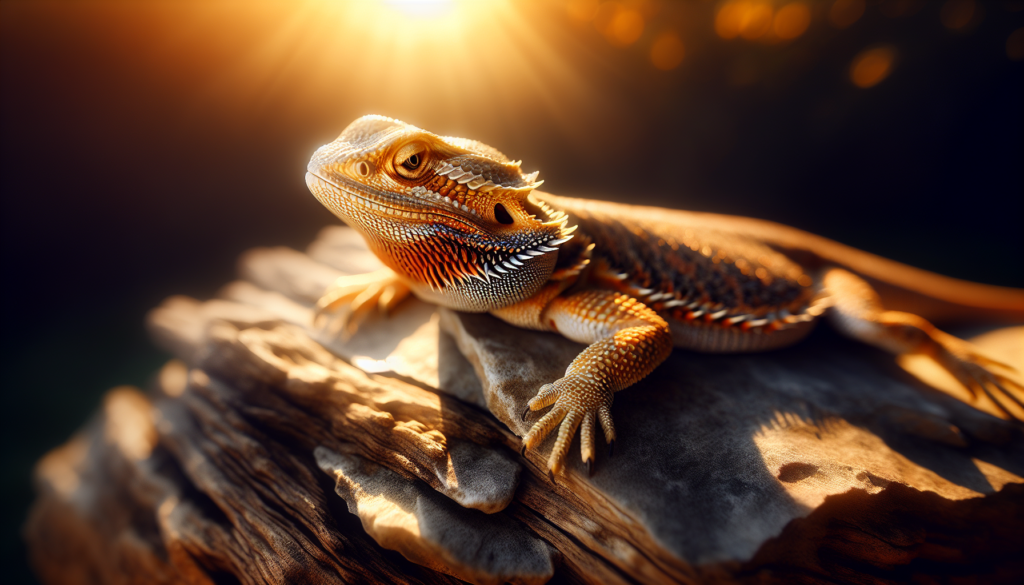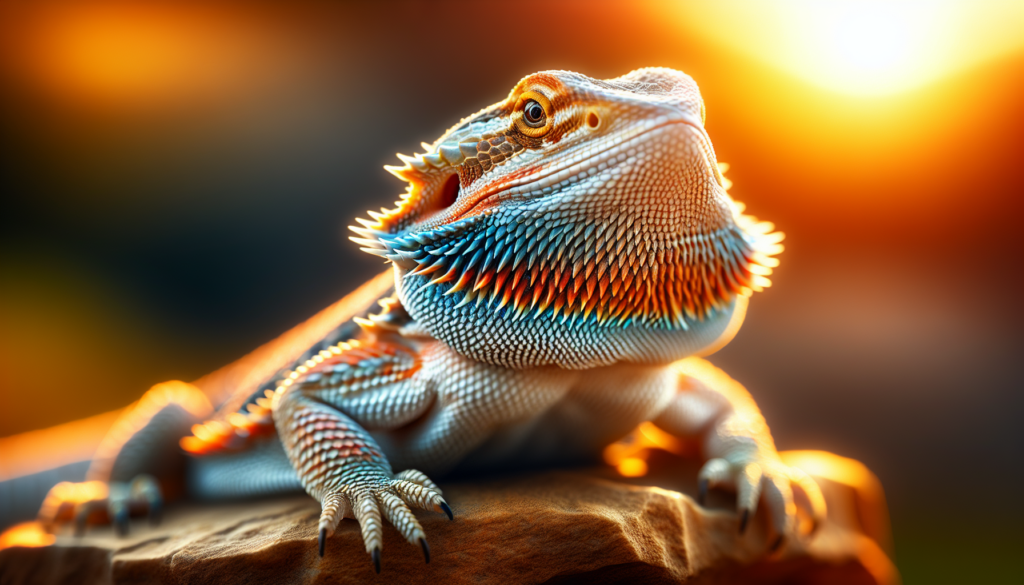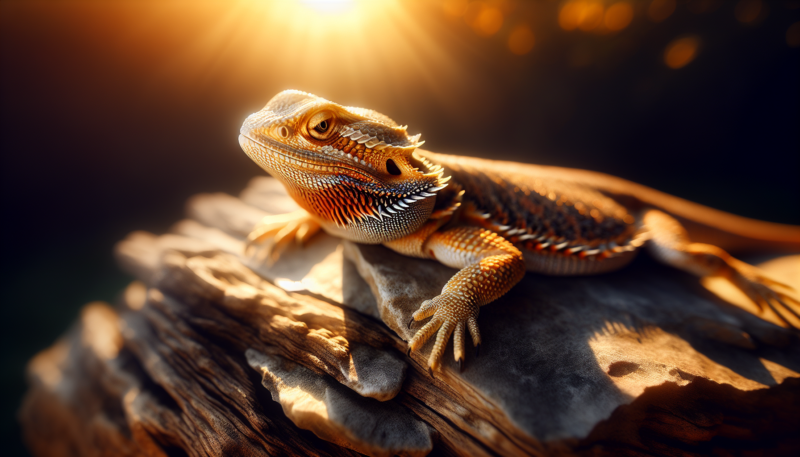Are you considering adding a new member to your household? If so, have you ever thought about getting a bearded dragon? These fascinating creatures are becoming increasingly popular as house pets due to their unique characteristics and low maintenance requirements. In this article, we will explore whether a bearded dragon is a good fit for your home, providing you with all the information you need to make an informed decision about bringing one of these delightful reptiles into your life.
Is A Bearded Dragon A Good House Pet?
If you’re looking for a unique and fascinating pet that can thrive in a household setting, a bearded dragon might just be the perfect choice for you. These captivating reptiles are known for their docile nature, charismatic personality, and striking appearance. In this comprehensive article, we will explore all aspects of owning a bearded dragon, including their physical characteristics, habitat requirements, feeding and diet, social behavior, health and veterinary care, cleanliness, cost of ownership, suitability for households, legal considerations, and finally, provide an overall verdict and personal preference.
1. Physical Characteristics
1.1 Size and Appearance
Bearded dragons are medium-sized lizards that can reach an average length of 18 to 24 inches. They have a unique appearance, characterized by their spiky throat and a row of spines along their back. These spines can expand to form a “beard” when the dragon feels threatened or territorial, hence their name. Bearded dragons come in a variety of colors, including shades of brown, orange, yellow, and even red, adding to their visual appeal.
1.2 Lifespan
If properly cared for, bearded dragons have a relatively long lifespan. On average, they can live between 10 to 15 years, but with exceptional care and a healthy environment, some bearded dragons have been known to reach up to 20 years of age. Investing in a bearded dragon means committing to their long-term care and companionship.
1.3 Activity Level
Bearded dragons are diurnal creatures, meaning they are active during the day and sleep at night. However, their activity patterns can vary depending on the individual and the environmental conditions. Generally, bearded dragons are known for their curious and relatively active nature. They enjoy exploring their surroundings and engaging in natural behaviors such as basking, hunting, and climbing. Providing them with an enriching and stimulating environment is essential for their overall well-being.
2. Habitat and Enclosure Requirements
2.1 Terrarium Size
Creating a suitable habitat for your bearded dragon is crucial for their health and happiness. A spacious terrarium is essential to accommodate their size and allow for natural movements. A minimum enclosure size of 40 gallons is recommended for juvenile dragons, while adult dragons will thrive in a 75-gallon or larger enclosure. Ensure that the enclosure is secure, well-ventilated, and escape-proof.
2.2 Lighting and Temperature
Bearded dragons require specific lighting and temperature conditions to thrive. They need a source of UVB lighting to aid in the synthesis of vitamin D3, which is vital for calcium absorption and overall bone health. In addition to UVB lighting, a basking spot should be provided, which can reach temperatures between 95 to 105°F, allowing the dragon to regulate their body temperature effectively. The cooler side of the enclosure should be maintained around 75 to 85°F to provide thermoregulation options.
2.3 Substrate
Choosing the right substrate for your bearded dragon’s enclosure is essential for their comfort and hygiene. Newspaper, reptile carpet, or ceramic tiles are commonly used substrates that are safe and easy to clean. Avoid loose substrates such as sand or gravel, as they can pose a health risk if ingested during feeding or accidentally during activity.
2.4 Hiding Spots and Decorations
Creating a stimulating and enriching environment for your bearded dragon is crucial for their mental and physical well-being. Provide plenty of hiding spots and decorations such as rocks, branches, and caves to mimic their natural habitat. These structures not only provide opportunities for physical exercise but also help alleviate stress and promote a sense of security.

3. Feeding and Diet
3.1 Types of Food
Bearded dragons are omnivores, meaning they eat a mixture of plant matter and insects. A well-balanced diet for a bearded dragon should consist of a variety of gut-loaded insects, such as crickets, roaches, and mealworms, as well as leafy greens, vegetables, and fruits. It is essential to provide a diverse array of food items to ensure they receive all the necessary nutrients.
3.2 Feeding Schedule and Portion Control
Establishing a consistent feeding schedule is crucial for maintaining a healthy bearded dragon. Juveniles should be fed twice per day, with insects making up 80% of their diet and vegetables and greens comprising the remaining 20%. Adult bearded dragons can be fed once a day, with insects still making up a significant portion of their diet, but with a higher proportion of vegetables and greens. Portion control is important to prevent obesity and ensure a balanced intake of nutrients.
3.3 Nutritional Requirements
Bearded dragons require a balanced diet to meet their nutritional needs. They require a high amount of calcium and vitamin D3 for bone health, which can be supplemented through either food or UVB lighting. In addition, they need a variety of vitamins and minerals available in plant matter and a diverse insect diet. Dusting insects with calcium and vitamin supplements is recommended to ensure they receive all necessary nutrients.
4. Social Behavior and Handling
4.1 Solitary Nature
Bearded dragons are not social animals and generally prefer a solitary lifestyle. They do not require the companionship of other dragons for their well-being. However, they can form a bond with their owners through consistent interaction and gentle handling. It is important to respect their individual social preferences and not force social interactions if they show signs of stress or discomfort.
4.2 Taming and Bonding
Taming a bearded dragon requires patience and consistent handling. Start by allowing them to get used to their new environment before gradually introducing handling sessions. Handle your dragon gently and frequently, offering treats and positive reinforcement. Over time, they will become more accustomed to your presence and develop a bond based on trust and familiarity.
4.3 Handling and Interaction
When handling a bearded dragon, it is important to support their body properly, as they can be quite fragile. Avoid grasping or squeezing their abdomen, as this can cause stress and potential harm. Interacting with your bearded dragon through gentle strokes, hand-fed treats, and supervised playtime outside of their enclosure can further strengthen the bond you share.

5. Health and Veterinary Care
5.1 Common Health Issues
Like any pet, bearded dragons are susceptible to certain health issues. Some common health problems include metabolic bone disease, respiratory infections, impaction, and parasitic infestations. Regular observation, maintaining proper husbandry conditions, and seeking veterinary care at the first sign of illness are crucial to ensuring your bearded dragon’s well-being.
5.2 Regular Check-ups and Vaccinations
While bearded dragons do not require vaccinations, regular check-ups with a reptile-experienced veterinarian are highly recommended. These check-ups allow for a comprehensive examination and monitoring of your dragon’s health. Veterinarians can provide guidance on nutrition, correct husbandry practices, and detect early signs of potential health issues.
5.3 Emergency Care
In the event of an emergency, it is essential to have a reptile-experienced veterinarian’s contact information readily available. Be prepared for potential emergencies by familiarizing yourself with common signs of distress or illness and having a plan in place. Prompt veterinary intervention can make a significant difference in the outcome of a health crisis.
6. Cleanliness and Hygiene
6.1 Cleaning the Enclosure
Maintaining a clean and hygienic environment is crucial for your bearded dragon’s health. Regularly spot clean the enclosure by removing feces and uneaten food. Perform a thorough cleaning at least once a month, disinfecting the enclosure and all accessories with reptile-safe cleaning solutions. A clean enclosure reduces the risk of bacterial growth, parasites, and fungal infections.
6.2 Maintaining Proper Hydration
Proper hydration is essential for your bearded dragon’s well-being. Mist their enclosure daily to provide humidity, and make sure they have access to fresh, clean water. Some bearded dragons may prefer bathing to maintain hydration, but ensure the water temperature is appropriate and never leave them unattended during bath time.
6.3 Preventing Parasites and Diseases
Preventing parasitic infestations and diseases is critical for your bearded dragon’s health. Regularly observe their behavior, appetite, and feces for any signs of illness. Avoid introducing potentially contaminated materials into their enclosure, and practice good hygiene habits when handling them or cleaning their enclosure. Seek veterinary advice if you suspect your bearded dragon may be affected by parasites or disease.
7. Cost of Ownership
7.1 Initial Setup Costs
Owning a bearded dragon involves certain upfront costs to provide a suitable environment for them. These costs include the enclosure, heating and lighting equipment, substrate, decorations, and initial food supply. It is important to invest in quality equipment to ensure the safety and well-being of your dragon, which may result in a higher initial investment.
7.2 Ongoing Expenses
After the initial setup, ongoing expenses for a bearded dragon include regular food supply, replacement bulbs for lighting, occasional substrate changes, and veterinary check-ups. Additionally, it is important to budget for potential unexpected expenses related to health issues or equipment failure. Being financially prepared will ensure that you can provide the necessary care your bearded dragon requires.
7.3 Potential Veterinary Costs
While bearded dragons are generally hardy reptiles, veterinary care should be factored into the cost of ownership. Regular check-ups, potential diagnostics, and treatment of health issues can incur expenses. Considering potential veterinary costs before choosing a bearded dragon as a pet will help you plan and budget responsibly.
8. Suitability for Households
8.1 Compatibility with Children
Bearded dragons can be a suitable pet for households with children, given proper handling and supervision. It is important to teach children how to handle the dragon gently and respect their individual needs for space. Adult supervision is crucial during interaction to ensure the safety and well-being of both the bearded dragon and the child.
8.2 Allergies and Asthma
Bearded dragons are generally considered hypoallergenic pets, as they do not produce fur or dander that can trigger allergies or asthma. However, it is important to note that some individuals may still be sensitive to certain proteins present in reptile skin or shed particles. If anyone in the household has known allergies or asthma, it is advisable to spend time with a bearded dragon before committing to ownership to gauge any potential reactions.
8.3 Noise and Activity Levels
Bearded dragons are relatively quiet pets and do not generate excessive noise. Their activity levels are moderate, with bursts of energy followed by periods of rest. They do not require constant stimulation or loud activity, making them suitable for households where a calm and peaceful environment is preferred.
9. Legal Considerations
9.1 Local Regulations
Before bringing a bearded dragon into your home, it is essential to familiarize yourself with any local regulations or restrictions regarding reptile ownership. Some areas may have specific rules in place, such as permits or licenses required for keeping certain reptile species. Compliance with these regulations is important to ensure legality and the well-being of your bearded dragon.
9.2 Permits and Licenses
If your locality requires permits or licenses for bearded dragon ownership, it is crucial to obtain these before bringing a dragon home. Research and understand the specific requirements, including any documentation or inspections necessary to maintain compliance with the law. Failing to adhere to these regulations can result in legal consequences and potential harm to your pet.
10. Conclusion
10.1 Overall Verdict
In conclusion, a bearded dragon can make a fantastic and rewarding house pet for the right individual or family. Their fascinating physical characteristics, relatively low-maintenance care requirements, and docile nature make them a popular choice among reptile enthusiasts. However, it is crucial to consider their specific needs, including proper habitat setup, appropriate nutrition, regular veterinary care, and the financial commitment associated with ownership.
10.2 Personal Preference
Ultimately, the decision of whether to welcome a bearded dragon into your home as a pet is a personal one. It is essential to assess your own lifestyle, preferences, and commitment level before making such a decision. Research, preparation, and a genuine passion for reptiles are key factors in providing a loving and enriching home for a bearded dragon.
By understanding their physical characteristics, habitat requirements, feeding and diet, social behavior, health and veterinary care, cleanliness, cost of ownership, suitability for households, legal considerations, and personal preferences, you will be well-equipped to make an informed choice about whether a bearded dragon is the right pet for you.
